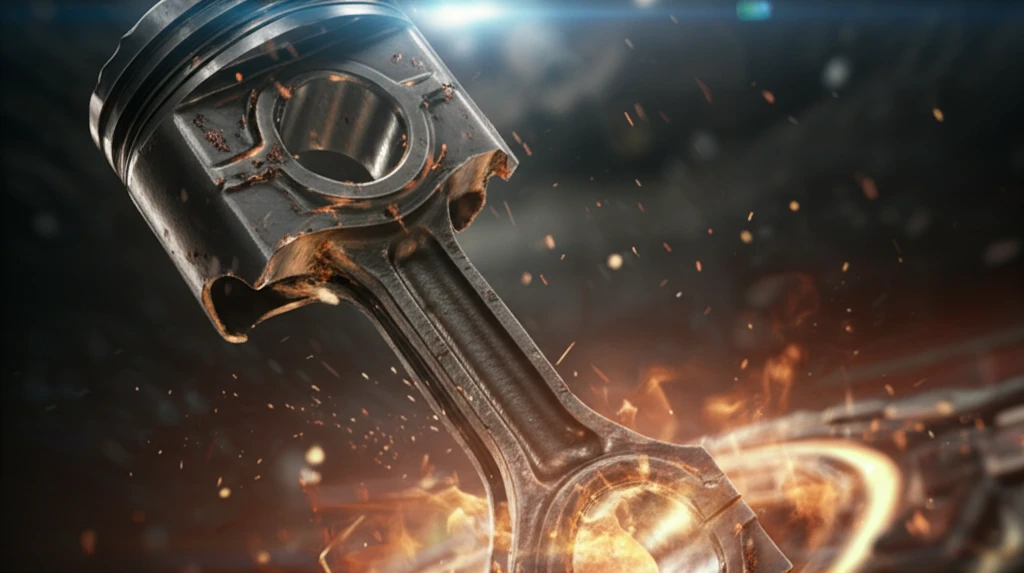
Connecting Rods: Are Yours Built to Last? Failure Analysis and Material Selection Guide
"A deep dive into connecting rod failure simulation, material choices, and how to ensure your engine's heart can withstand the pressure."
The relentless dance within an engine cylinder—fuel igniting, pistons surging, and connecting rods transferring force—is a ballet of controlled explosions. Connecting rods, the unsung heroes in this process, bear the brunt of immense pressure and cyclical stress. Their failure can spell disaster for the entire engine, turning that finely-tuned machine into an expensive paperweight.
This article will navigate the world of connecting rods, exploring how engineers use finite element analysis to predict and prevent failures. We’ll delve into the crucial role of material selection, comparing the strengths and weaknesses of steel, aluminum alloy, and titanium alloy. Whether you're an automotive enthusiast, a mechanical engineer, or simply curious about the inner workings of engines, this guide provides valuable insights into ensuring the longevity and reliability of connecting rods.
The goal is to translate complex research into actionable knowledge. You will learn about how connecting rods are subject to cyclic loads, and the implications of these loads for the design process. By the end of this article, you’ll have a solid understanding of how to choose the right materials and design strategies to keep your engine running smoothly for years to come.
What Causes Connecting Rods to Fail? Understanding the Stress Factors

Connecting rods operate in a harsh environment. Subjected to intense pressure from combustion and the reciprocating motion of the piston, these components endure a complex combination of compressive and tensile forces. Over time, these forces can lead to fatigue, deformation, and ultimately, failure.
- High-Pressure Combustion: The explosion of fuel inside the cylinder generates immense pressure, pushing down on the piston and transmitting force through the connecting rod.
- Cyclic Loading: Connecting rods experience millions of cycles of stress as the engine runs, leading to fatigue and crack propagation.
- Inertia Forces: The rapid acceleration and deceleration of the piston create inertia forces that add to the stress on the connecting rod.
- Material Defects: Microscopic flaws or impurities in the material can weaken the connecting rod and initiate failure.
- Lubrication Issues: Inadequate lubrication can lead to increased friction and heat, accelerating wear and tear on the connecting rod bearings.
The Future of Connecting Rod Design: Lighter, Stronger, and More Reliable
As engine technology continues to evolve, the demands on connecting rods will only increase. Future designs will likely incorporate advanced materials like composites and innovative manufacturing techniques to further reduce weight and improve strength. By understanding the failure mechanisms and employing sophisticated simulation tools, engineers can ensure that connecting rods remain a reliable and durable component of the internal combustion engine for years to come.
